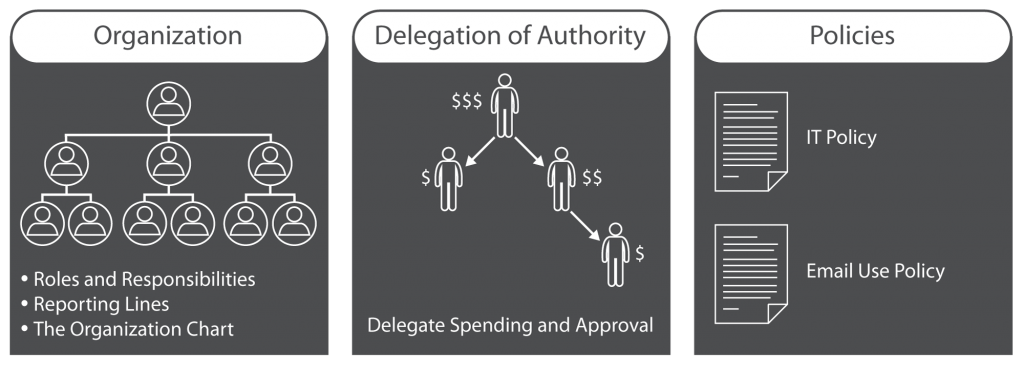
Corporate or company governance is a term that has been trending in recent periods amongst the startup growth circles, and no doubt that good governance is a key ingredient in the formula for sustainable growth. Yet many entrepreneurs (and perhaps even some corporate managers) remain uncertain as to what the term actually means, and what they should be looking for when thinking about the governance of their businesses. The following are 3 major items every entrepreneur should consider when making governance considerations, be it putting together or updating a governance manual, or seeking shareholder or board approvals on authority and systems:
I.The Organization: how the organization should look like and function
The first pillar of governance is identifying how the company is organized and structured, and who is responsible for doing what in the organization. This involves clearly mapping the board and its authority, executive management and their domains, and the reporting lines for every department and division. Entrepreneurs should take extra effort to clearly establish and divide roles and responsibilities to minimize conflicts and delays caused by intersecting spheres. The key elements in building or structuring an organization are:
a.Roles and responsibilities of each management level
b.Clear reporting lines
c.The organization chart
II.Delegation of Authority
The second pillar of governance is mapping where the authority to make decisions and spend company funds reside along the company pyramid. The constitutional documents (articles, memoranda of association, and shareholders’ agreements) delegate authority from the shareholders to one or two levels of higher management. The further flow of delegation should be mapped, ideally in line with the roles and responsibilities of various positions in the organization. The entrepreneur should pay attention to approval and spending authorities, noting that the two can be distinctly managed (example: CTO to approve a purchase, but CTO and CFO to approve the transfer of funds to the seller), and to spending within and outside of the approved business or operating plan.
III.Policies
The final part of a business’s governance is the set of policies and procedures the business follows in carrying out its daily activities. These are very much driven by the operational needs of the business, but some are very common today that every business is expected to have them. These common policies include an IT policy, email use policy, privacy and data maintenance policy, and vehicle use policy. The entrepreneur should assess what are those certain operations that should be carried out uniformly, and develop the set of policies or procedures to ensure that every employee adheres to such methods.
